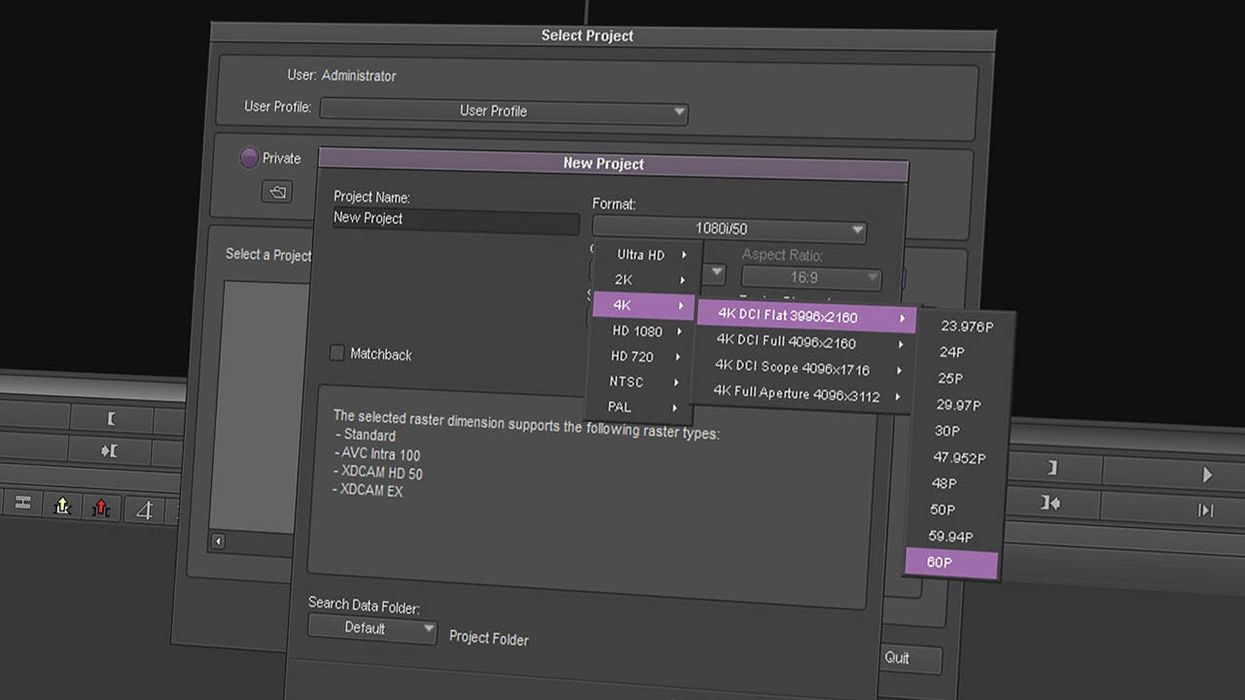You Can FINALLY Edit 4K Natively in Avid Media Composer
Christmas has come early this year for Avid editors.

Media Composer, Avid's industry-standard non-linear editing platform now has the ability to natively edit clips with higher than HD resolution, as well as numerous other features included in this year-end update.
In the past, Avid projects and timelines have been limited to HD resolution. While this wasn't necessarily restrictive for many editors and post houses, since lower resolution proxy media is generally used in the typical Avid workflow, it did mean that editors looking to work natively with and export 4K media had to look elsewhere for their high-resolution editing kicks. As of yesterday, Media Composer's project window now offers support for a whole range of higher resolution project sizes and frame rates.
To see how 4K is now integrated in the Avid workflow, here's the first episode in Avid's new tutorial series "Master the Art of 4K Editing" with long-time Avid instructor, Kevin P. McAuliffe.
Although the second episode of McAuliffe's new tutorial series hasn't been released yet, he talks about using Avid's new high-resolution DNxHR codecs briefly in this preview for the series from a few weeks ago. It covers some of the same ground as the previous video, but also talks about transcoding media to Avid's new codecs for ultimate efficiency in high-resolution workflows.
One of the most sorely-needed features in yesterday's release of Avid 8.3 is a nifty search box that now appears both in the project window (which lets you isolate certain bins with a quick text search) and in the bins themselves. The new release also includes support for a wide array of new project frame rates, as well as two new color spaces including Rec 2020 and DCI-P3, which is quickly becoming an industry standard for content made for theatrical release.
Obviously, the folks at Avid are a bit behind on the times when it comes to incorporating features such as native 4K editing and low-resolution proxy modes into their software. Premiere Pro and Final Cut Pro have been resolution (and frame rate) independent for years, which is one of the many reasons that these software tools are slowly but surely scooping up Avid's old customers. With that said, Avid's new resolution independent architecture will allow them to keep with the times as Hollywood and many other sectors of video production move over to high-resolution video capture. For that reason, I don't see Avid being dethroned as the industry-standard NLE for feature film editing any time in the near future.
For a full rundown on the new features in Media Composer 8.3, head on over to Avid's blog.
Source: Avid Blogs

 Richard Gere and Uma Thurman in 'Oh, Canada' via Kino Lorber
Richard Gere and Uma Thurman in 'Oh, Canada' via Kino Lorber  Uma Thurman in 'Oh, Canada'via Kino Lorber
Uma Thurman in 'Oh, Canada'via Kino Lorber 









